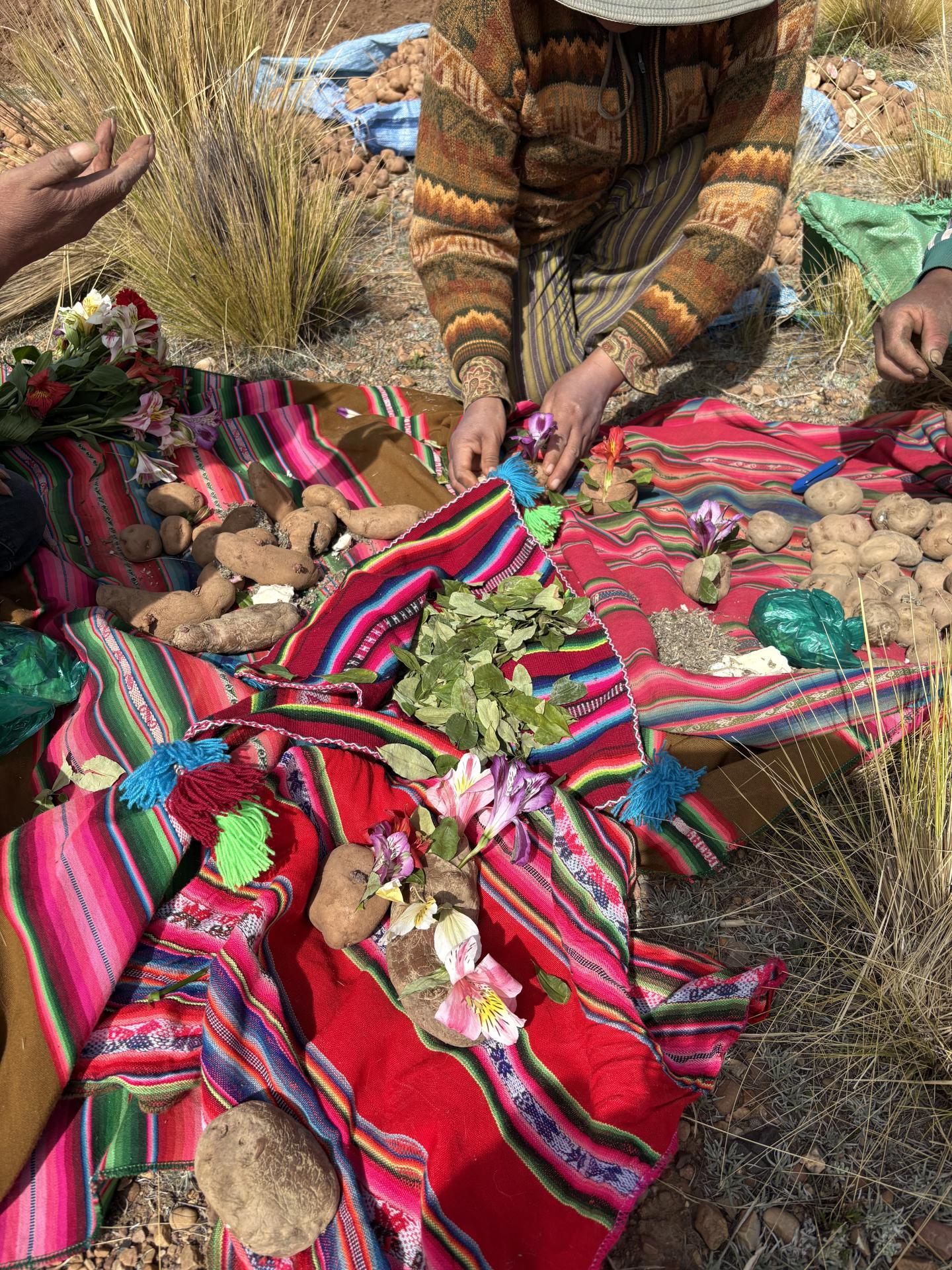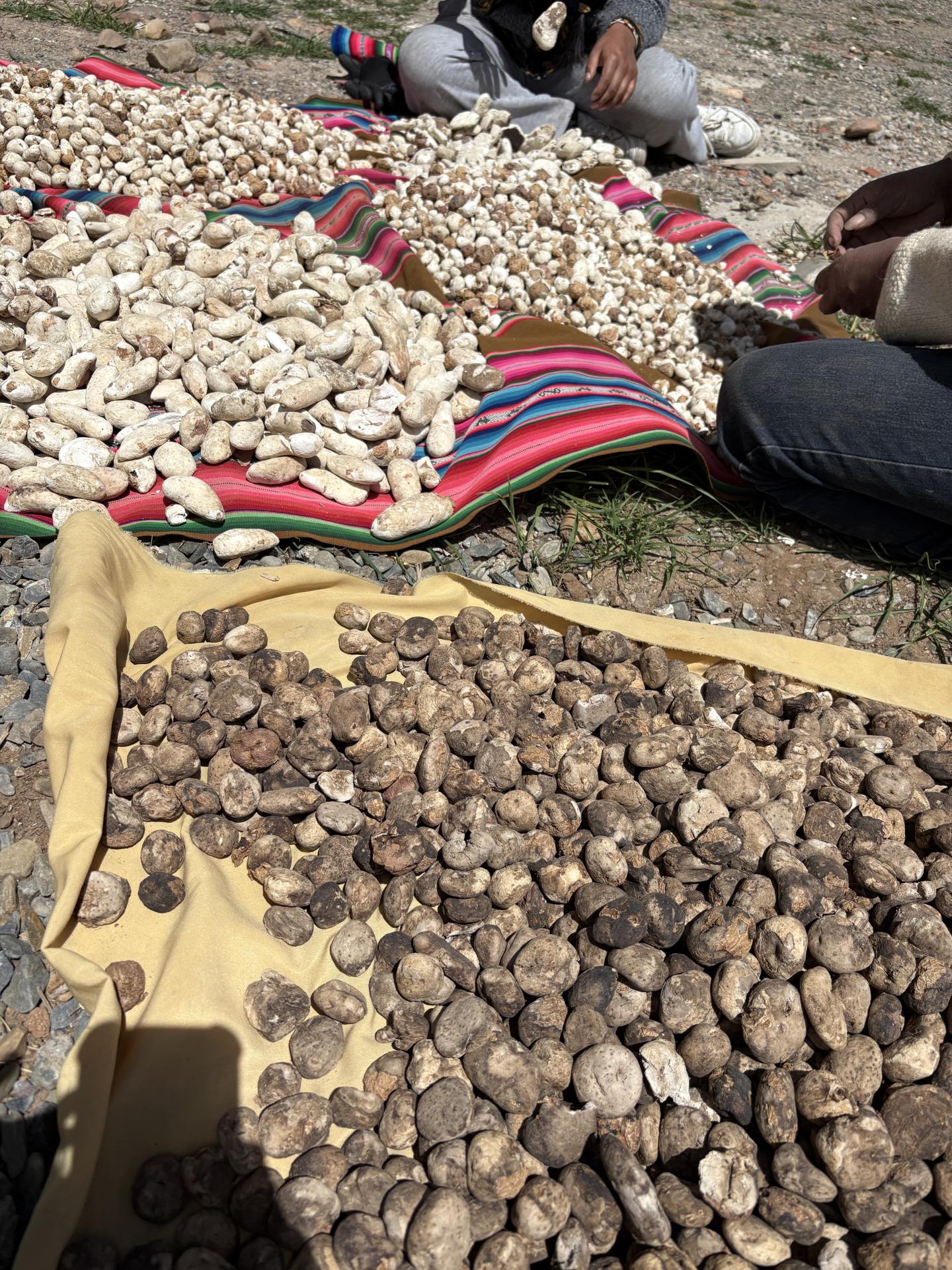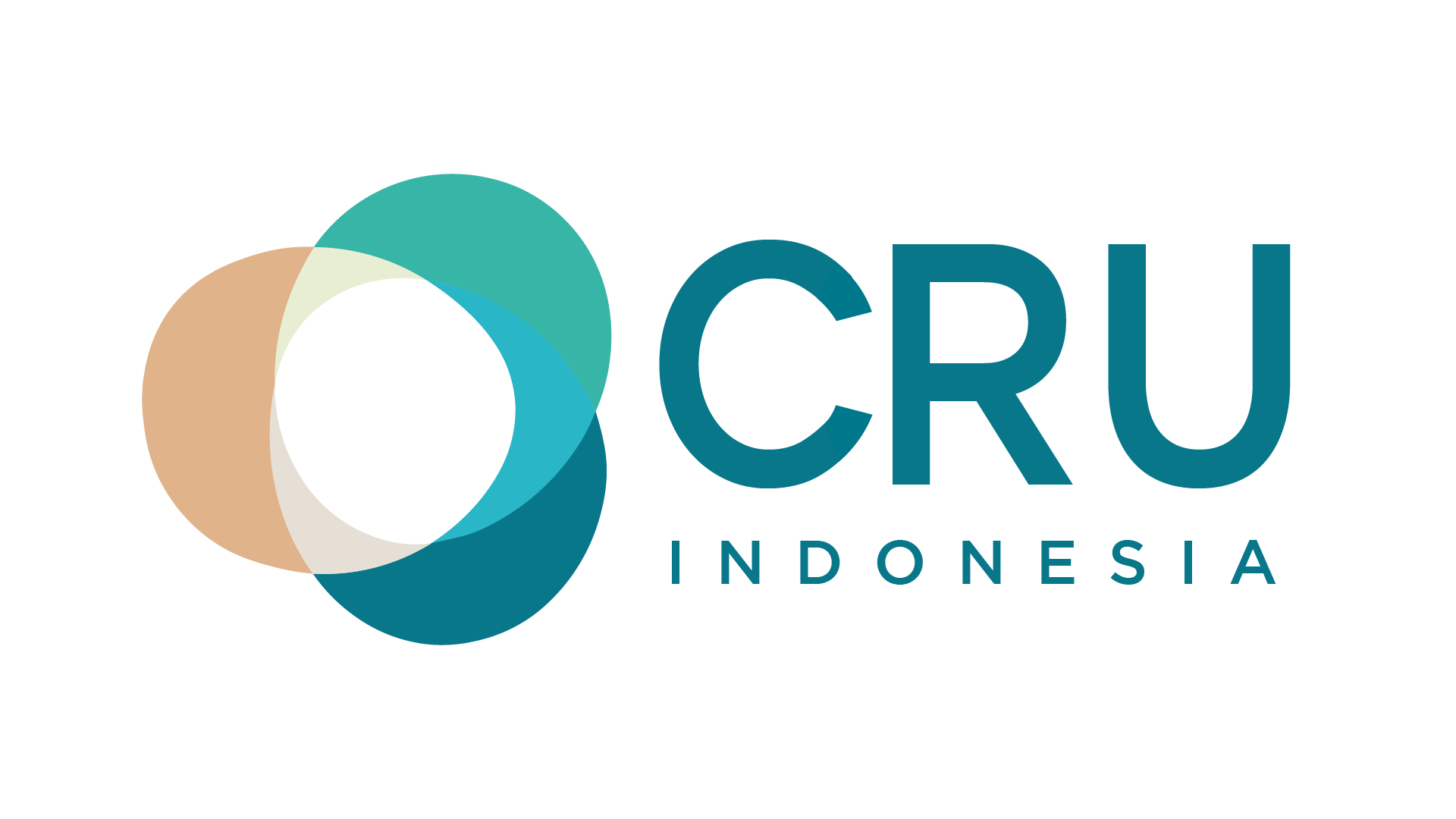Chuño, a Symbol of Food Sovereignty and Ancestral Food Preservation
7 November 2025belen
.jpg?itok=JUTqBZwu)
By Belen Iñiguez (CS Staff)
To speak of food sovereignty from and for Indigenous Peoples is to speak of a food production that is respectful toward animals, seeds, the earth, life, and spirituality. Food sovereignty also implies conserving food, applying ancestral knowledge that enables food to be kept in good condition for a more extended period, without relying on industrial processes. That preservation of food is a fundamental part of the right to decide how to feed oneself.
In Bolivia, the Indigenous Peoples of the highlands depend on ancestral knowledge to carry out this preservation. For the Aymara Peoples, the relationship with the seeds and the earth is profoundly reciprocal. Women interact directly with the seeds, speaking to them, making offerings to them, and generating a connection, where the person takes care of the seed so that it grows, and the seed, in turn, becomes the food that sustains the person.
At the time of sowing, the seeds that will serve as guides for the entire planting are selected. These guide seeds are decorated and honored, and then placed at the beginning of the planting rows.

The climatic conditions of the Bolivian highlands can be challenging for various plant species since the altitude ranges from 3,000 to 4,000 meters above sea level. It is an arid climate; it rains very little, the sun is intense, and the cold is harsh, especially at night. In spite of the environment and the altitude, the potato has accompanied the Peoples of the highlands for centuries. Bolivia has more than a thousand varieties of native potatoes, meaning that there are more than a thousand different types of potatoes, varying in shape, color, size, flavor, and texture. This food represents an ancestral heritage.
However, fresh potatoes do not last more than a few months, or with luck up to a year in good condition. Then arises the question: how can this tuber be preserved so that it remains in good condition for consumption? The Indigenous Peoples have developed various preservation systems taking advantage of the climatic conditions of the territory.
Speaking with Beatriz Bautista (Aymara), a land defender and lawyer, she provided us with more detailed information about the preparation of an ancestral and emblematic food: chuño. In a few words, chuño is a potato that has been subjected to a dehydration process through the cold. Winter nights in the highlands typically range from -5 °C to -12 °C when there is frost. It is during the nights of June and July, when this cold is utilized to dehydrate the potatoes.
After the potato harvest, a selection process is carried out. First, the potatoes to be consumed in the short term are separated, then those that will serve as seeds for the next planting, and finally, those that will undergo the dehydration process to become chuño. On the night when the frost begins, the potatoes selected to become chuño are left exposed to the ice; depending on the intensity of the cold, they are left in for two to five nights. Once exposed to the cold, they are gathered and stepped on until all the water they contain is extracted. Afterward, they are peeled and taken into the sun until they dry completely and harden. This procedure changes their color and flavor; the potatoes become black and have a slightly acidic, yet very delicious, flavor.
A potato turned into chuño can last for decades — between 50 and 60 years or more — depending on how it has been stored. The dehydration process can even be repeated if several years have passed without consumption. By exposing them again to the cold and the sun, the chuño can be preserved for many more years.
Just like chuño, there are other methods of potato preservation. One example is tunta, a potato treated in a similar way with cold, but is exposed to moving water. They are submerged in river water so that the current transforms them into a kind of white potatoes. Another way of preservation is tocosh, a probiotic and medicinal fermented potato. There are also chuños made from other tuber species.
This method of preserving potatoes and various tubers is an ancestral practice that has been passed down from generation to generation. What is inherited is not only the knowledge of the dehydration process, but also the wisdom to identify when the frosts will arrive, when to remove the potatoes from the cold, how to peel them, from which direction the wind blows, the cycle of the moon, and all the cultural value involved in the preparation of this food.

Inheriting More Than Culture and Knowledge
When a couple begins a life together, they typically receive gifts to help them start their new life. Bautista shared one of her anecdotes that happened to her during this experience. Previously, people used to receive animals to raise and seeds to cultivate, but something else that was also given was food, such as chuño, to start a full home, as a symbol of prosperity. Bautista says: “My grandmother was about 80 years old […] when one day I went to visit her she gave me some big chuños, which are no longer seen now, and I asked her where she had gotten them, when she tells me ‘These were given to me when I got married, about 50 years ago, and I have kept them.’ Receiving those chuños was a very symbolic gesture for me […] it is a reminder for me not to forget to teach this knowledge.”
Beyond how surprising it may sound to inherit food, it is to revalue the act of protecting it as cultural and ancestral heritage. It is to take care of food in the long term. “Still, we communities depend on the land; we consume what we produce,” Bautista mentions.
Territory As Part of Food Sovereignty
The relationship between territory and food sovereignty is fundamental: without territory, the right to decide over one’s own food is undermined. More and more, Indigenous Peoples face greater threats due to extreme climatic conditions, forced displacement, contamination of their territories, and migration to the cities, which makes it difficult to maintain traditional forms of cultivation.
Ancestral methods of food preservation arose precisely as a response to climate changes. The peoples have known how to adapt to the natural cycles of the earth—such as drought, cold, wind, or rain—understanding that nature has its own rhythms. This knowledge, passed down from generation to generation, has been essential for survival: preserving food without depending on industrial energy, recovering seeds domesticated over centuries, and maintaining balance with the land.

Today, climate changes are increasingly unpredictable. Pachamama is often perceived as an inexhaustible source, forgetting that she also needs to be cared for. Returning to ancestral knowledge is to live once again in harmony with the earth and its cycles, recognizing the reciprocity between people and nature.
The situation of food sovereignty is at risk, not only in Bolivia. The loss of ancestral knowledge and native seeds, the introduction of transgenic seeds and agricultural chemicals, along with the overexploitation of monocultures and the pollution of Indigenous territories, deeply threaten these practices.
Continuing to share and revitalize ancestral knowledge of food preservation is essential. In the face of climate change and the extreme conditions we face, recovering this wisdom is a form of resistance—a way to preserve life and the sovereignty of the peoples.
Top image: Beatriz Bautista, Gloria Bautista, Cecilia Huanca, Félix Lucero and Nayra Bautista after the plantation day and next to the chuños and tuntas.
